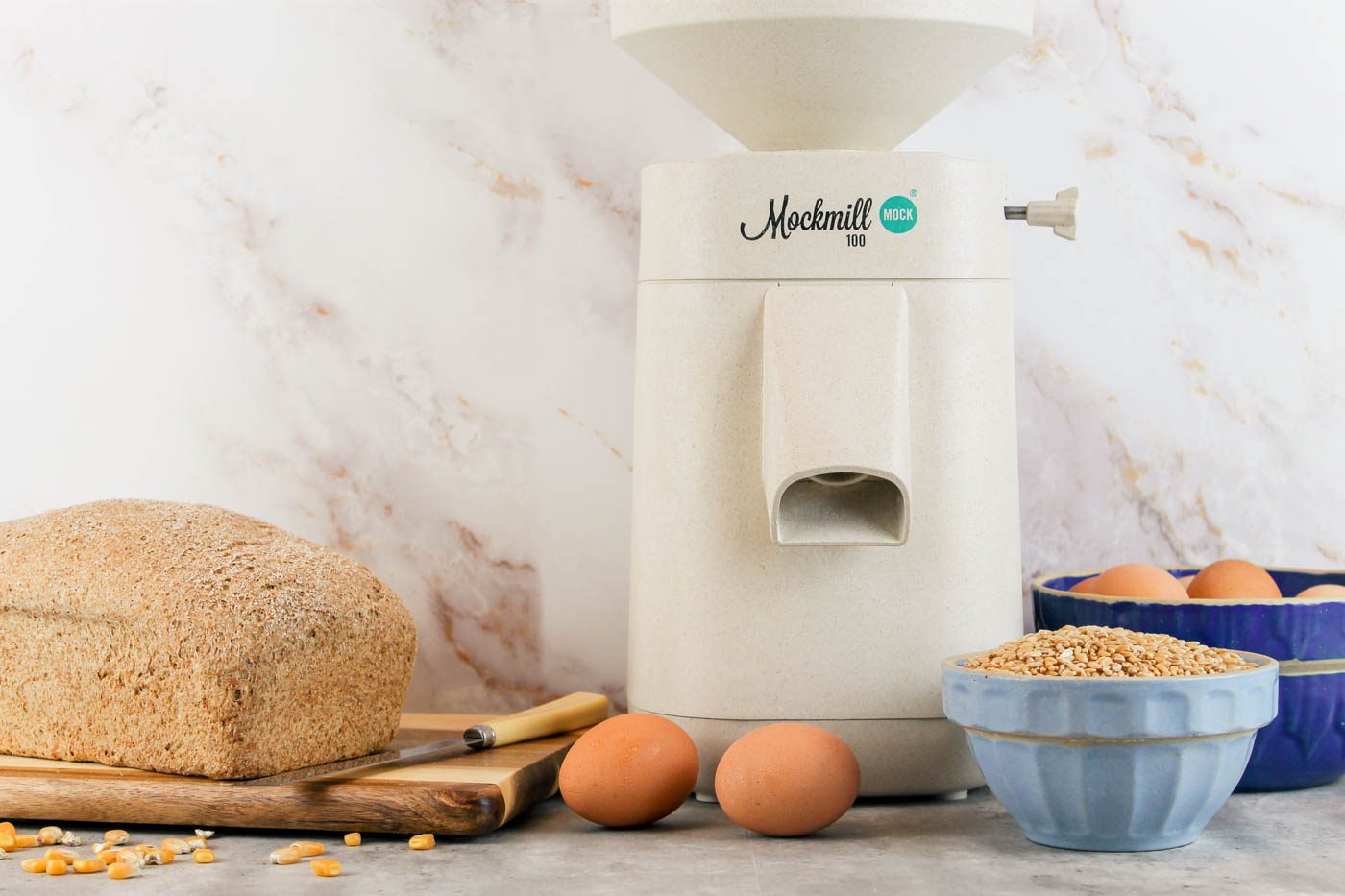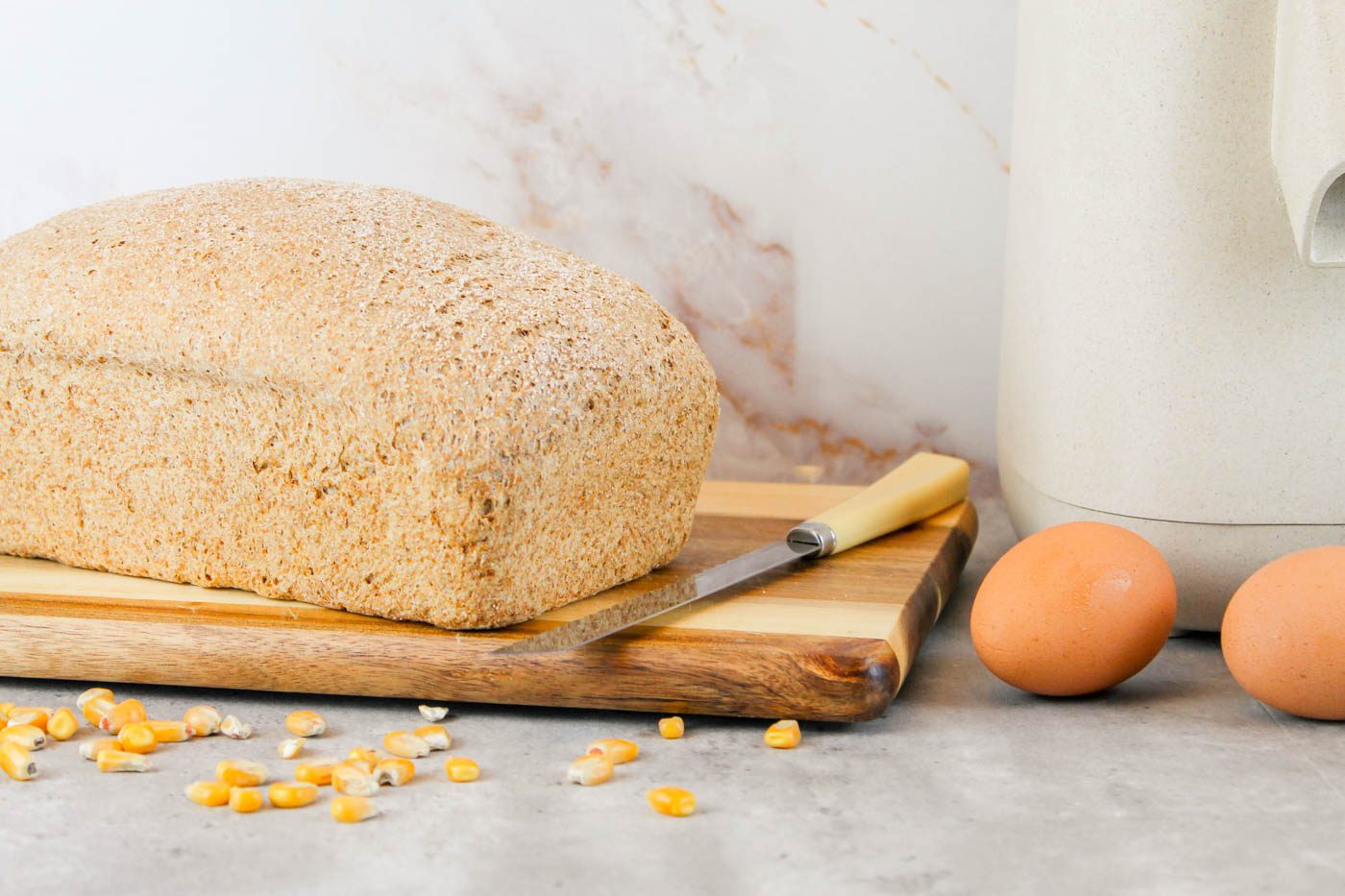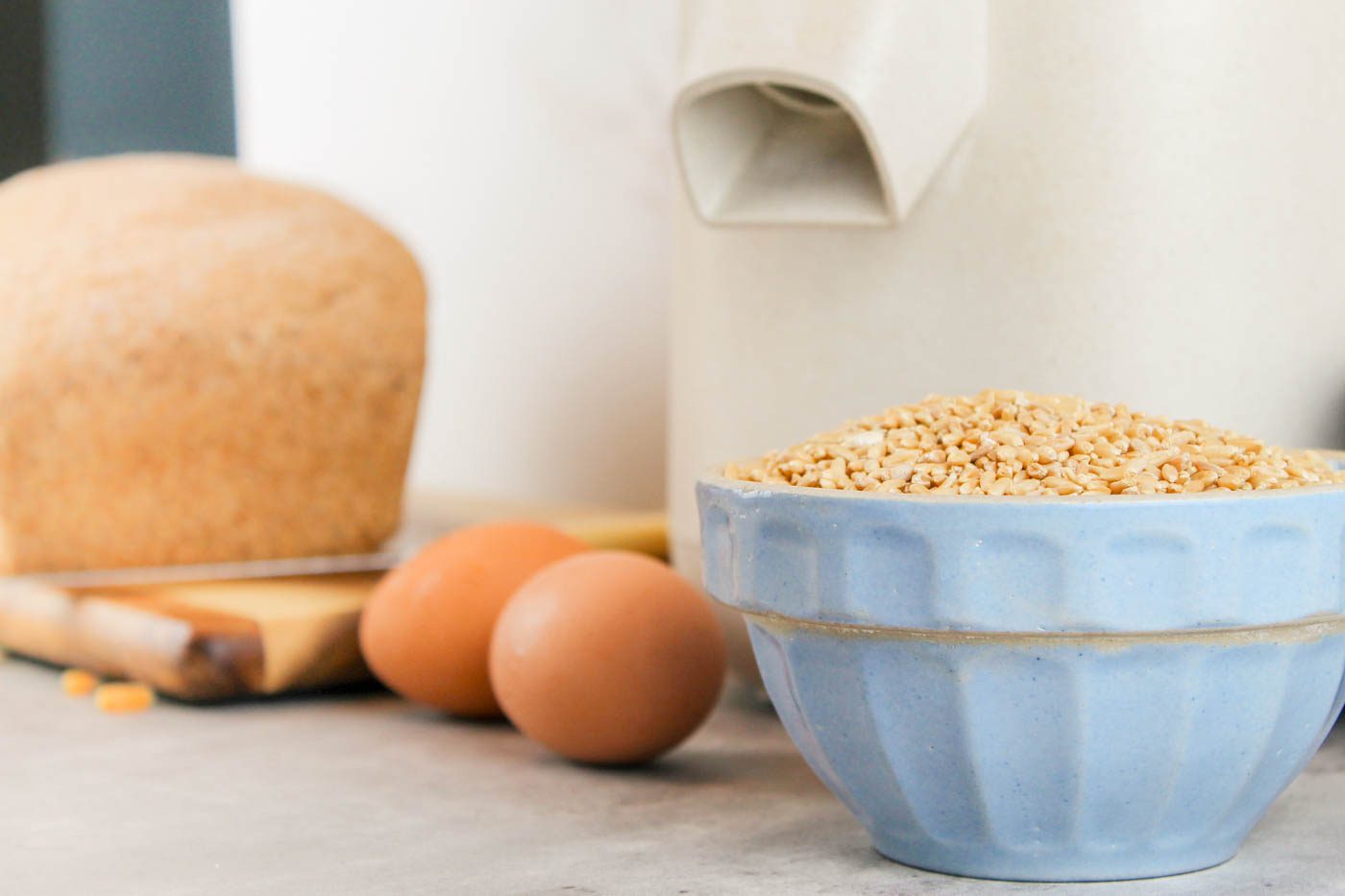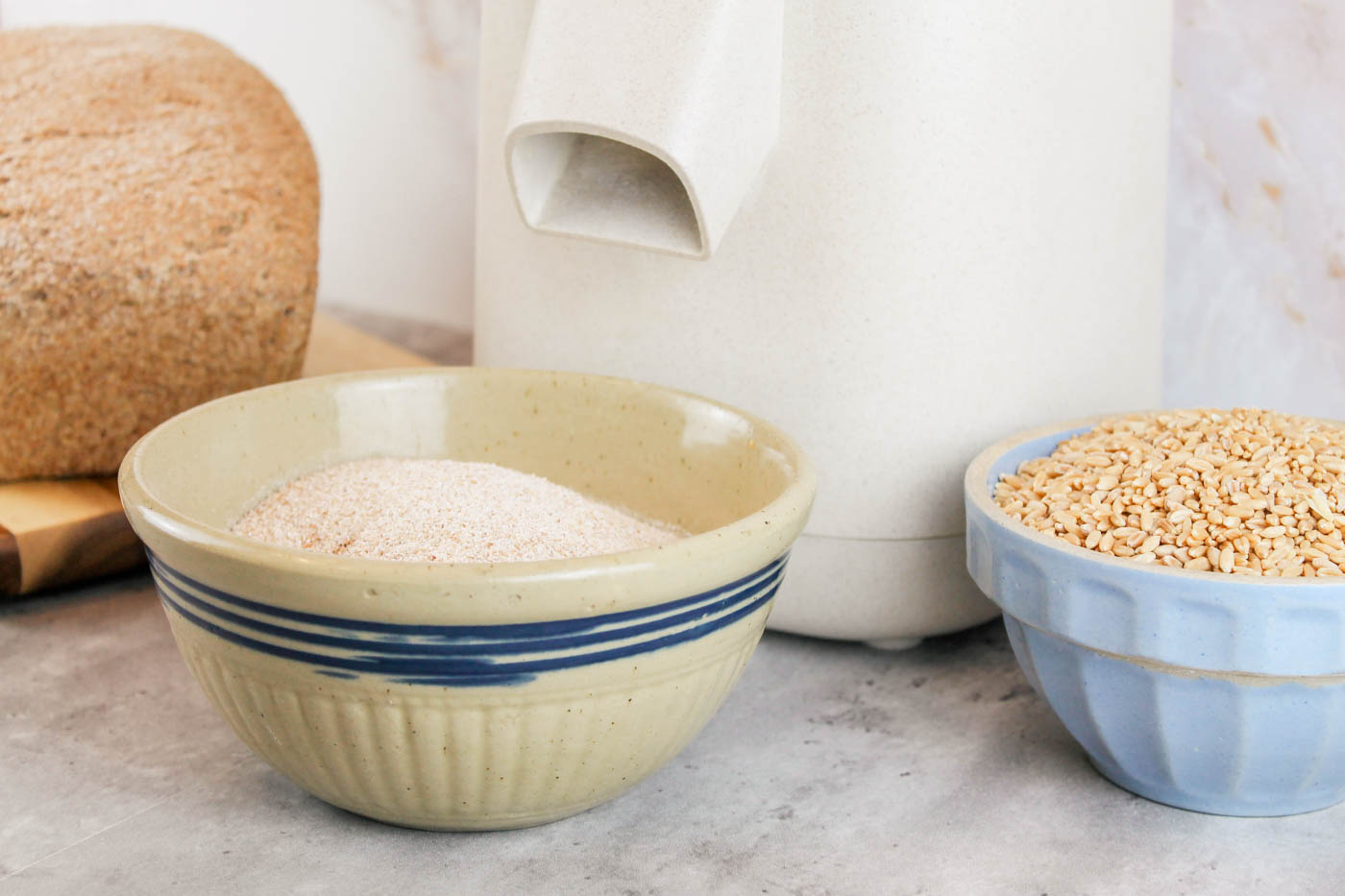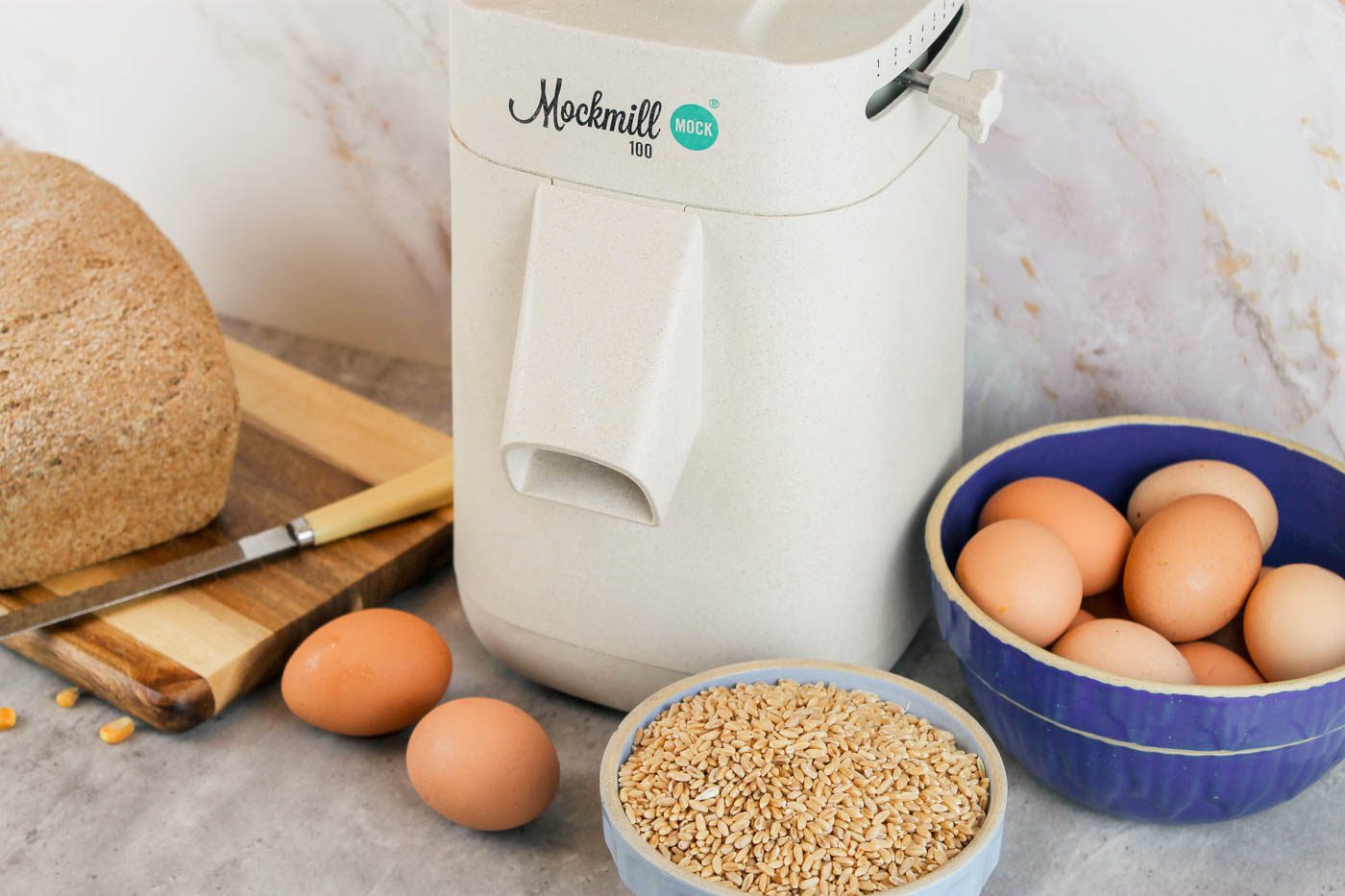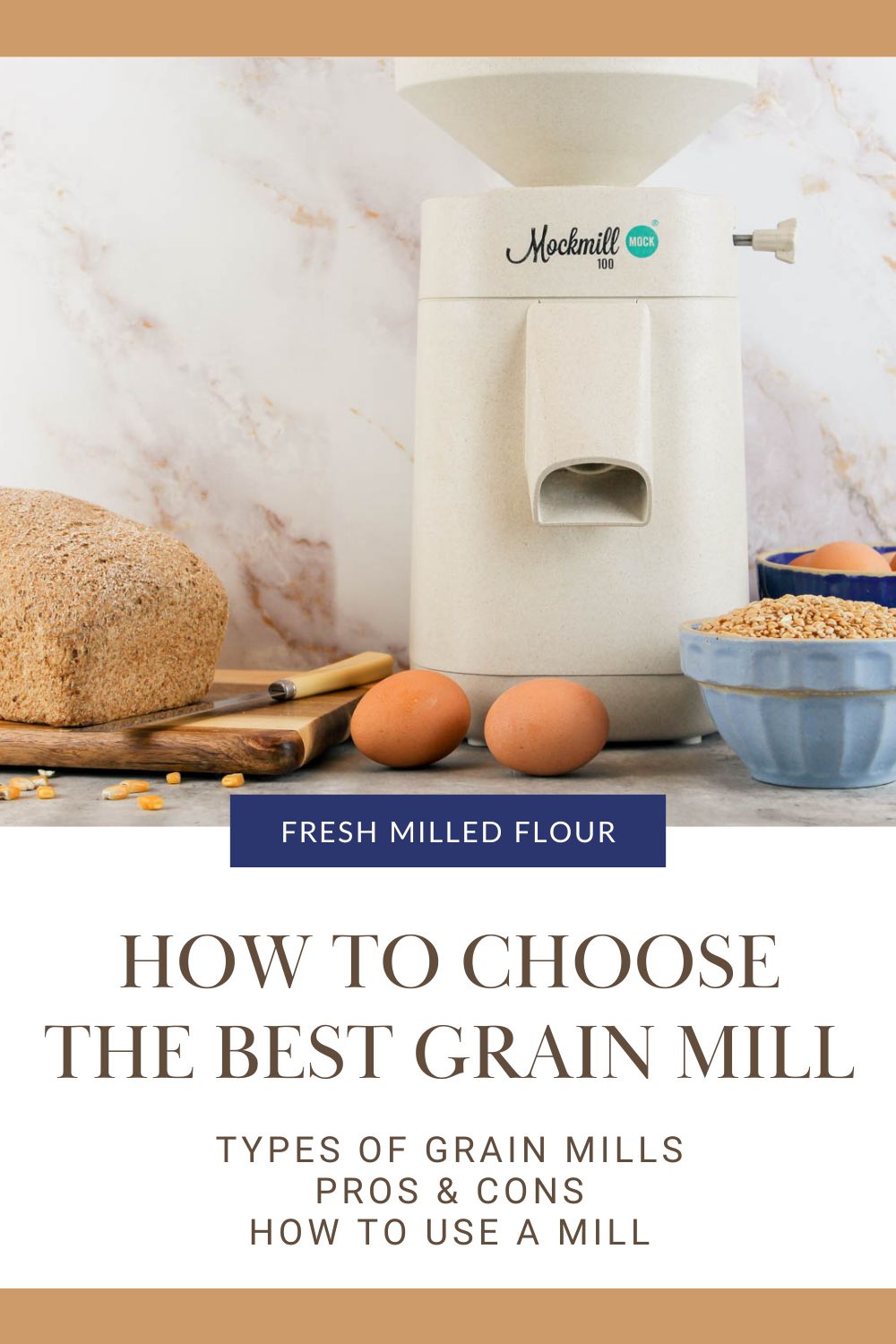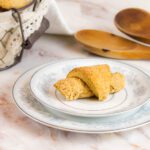Selecting a grain mill for home use can be overwhelming with all the choices available on the market. In this article, learn the key differences between each type of mill, how to use them and what is the best grain mill to turn wheat into fresh ground flour.
This post contains affiliate links, which means I make a small commission at no extra cost to you. In any case, I only link to products we actually use on our homestead and that I believe can truly benefit to you. See my full disclosure here.
It all started with a grain. A small wheat berry, that is. Our journey from commercially produced flour to the use of fresh ground flour at home is an interesting tale. But I’ll save that story for another day. If you are just beginning your adventure into transforming grains into flour, then this post is for you.
Today, I’d like to share with you how to choose the best grain mill. There are many types of small grain mills for home use available to purchase. Everything from stone mills and impact grain mills to manual and electric. Each mill comes with a unique set of tools to turn a grain into a bowl of flour.
On our homestead, I am partial to the Mockmill, a simple machine that uses two stones to grind grains. I use our small grain mill to make biscuits, breads, rolls and desserts. While this mill may work well in our kitchen, you may prefer a different style. Below I will discuss the pros and cons of each mill, my favorite type of grain mill and where to buy a grain mill.
What is the Purpose of Milling Grains?
Milling grains such as wheat berries, corn or buckwheat is the process of placing the grains into a mill and crushing them into a powder like flour or cornmeal. The resulting flour can then be used to bake a variety of foods. Our favorite way to use fresh milled flour is in a loaf of bread.
Benefits of Grinding Your Own Flour
There are numerous benefits to grinding your own flour. The primary reason being for nutrition. By milling your own grains it ensures that you will get the most nutrients, vitamins and fiber.
Other reasons why you may want to grind flour at home is for variety, preparedness for catastrophe or emergencies and cost savings. Instead of just purchasing a bag of plain all-purpose flour, grinding your own grains gives you an array of flour choices such as rye, spelt, einkorn and many heirloom options.
Types of Grain Mills
There are so many types of mills on the market. To narrow down your search for the best grain mill, I have first divided the information into types of mills and then from there, which mill is best for your particular situation.
Stone Mills
Let’s begin with the oldest form of milling, a stone mill. This form of mill transforms grains into flour by using two stones sandwiched together. As the stone moves, it cuts the grains into tiny pieces resulting in a fine or coarse flour. The coarseness of the flour is determined by how close or far apart the stones are.
A historical example of a stone mill are two stones, one fixed in place while the top circular stone is moved by a strong animal. Today most people don’t have a horse or donkey on hand, so a mill powered by electricity is the best choice. You can learn more about the best stone mill below.
Before we much on, I do want to note that stone mills are the mill of choice if you’d like to keep the grains nutritional content in tact. Stone-milling tends to stay cool as long as the device doesn’t heat over 110° F when grinding the grains.
Roller Mills
A roller mill is what makes the common white flour you see in grocery stores. Using large cylinders (rollers) spinning in opposite directions, the grains turn into flour. The downside to industrial roller mills is that they strip away essential nutrients like the bran and germ. What is left in commodity flour is only the endosperm. This creates a shelf stable product but it lacks nutrition and flavor. Two things that should be a crucial part of everyones diets.
Grain Hammer Mills
A hammer mill is a unique device where it uses a rotating hammer to strike the grain and crack it open, usually into multiple small pieces. From my research, it appears that grain hammer mills are commonly used for commercial purposes to break grains such as corn into fragments and add them to a bag of animal food.
Impact Grain Mill
Last but not least is the impact grain mill. This type of device uses stainless steel fins that spin to quickly crush the grain into flour. One of the most popular impact mills is called the NutriMill Classic. This type of grain mill can grind flour in record speed but it can also heat up the flour more than a stone mil does. Occasionally this type of mill produces a layer of flour dust on the countertop as it mills the grains. This isn’t a deal breaker, in my opinion, rather it is inconvenient as you will have the extra step of cleaning the surface once the device has finished milling.
How Do I Choose a Grain Mill?
Now that we have covered the different types of grain mills, it is time to decide whether you’d prefer a manual mill or one powered by electricity. Consider these pros and cons of each before making your final decision.
Manual Grain Mills
The biggest difference between a manual mill and an electric grain mill is the amount of effort you have to put in to create a cup of flour. Manual mills require time, patience and strength to operate. However, they can be ever so handy should the power go out or you find yourself traveling where there is no access to electrical power.
Our personal favorite manual grain mill is the Wondermill. Not only does it have that old fashioned look, it can grind dry and wet grains such as wheat, coffee, nut butters and masa. While our Mockmill is our go-to mill, we do have the Wondermill manual hand mill as a backup.
Pros of a Hand Mill
- Excellent for preppers, power outages, travel or emergencies
- Capable of grinding dry, hard, soft, wet and oily grains
- Beautiful with a romantic feel that makes one think of those eras long ago when times were simpler
- Many, like the Wondermill are built to last a lifetime
Cons of a Hand Mill
- Requires endurance because your muscles solely power the mill
- While many manual mills advertise they are quick, they cannot compare to the speed of an electric mill
- Numerous manual mills can be heavy, weighing 10-20 lbs.
Electric Grain Mills
I am so thankful to live in a day and age where I can use electricity to grind my own flour at home. I simply plug the cord into an outlet, turn on the mill, pour a cup of wheat berries into the hopper and within minutes, I have a cup of freshly milled flour. While this is amazing, there are a couple downsides to an electric grain mill. Here are a few pros and cons of a grain mill powered by electricity.
Benefits of an Electric Mill
- Quick and very easy to use
- Ability to choose the grinding settings, giving you a super fine flour, if desired
- Low temperature processing insuring the most nutrition in your flour
- Large hopper size allowing you to grind a lot of grains all at once
Downsides of an Electric Mill
- Can be expensive
- Noisy. Do not run it while the children are napping
- Inability to grind oily products
- May produce dust, leaving a layer of flour on your countertop and anything nearby
Best Stone Grain Mill
If you decide to go the route of a stone mill, I would highly recommend purchasing a Mockmill. After owning a Mockmill 100 for a few years now, I couldn’t be happier with my choice. While there are many great mills out there, I believe Mockmill is the best grain mill for grinding flour at home. Here are a few highlights to consider before purchasing a mill.
Mockmill Grain Mill
Pros
- Simple to use
- Long lasting, high quality stone grain mill
- Cleaning the mill is very easy
- Tall and narrow in size so it won’t take up much room on your kitchen countertop
- Has a variety of settings allowing you to create fine or coarse flour
- Ability to mill grains a second time if you would like a finer flour
- Flour comes out cool unlike other mills that creates warm flour as it processes the grains
Cons
- A grain mill from Mockmill is an investment. Pricing starts at $342.
- The mill must be running before you toss in any grain or it will not work
- Can be a bit loud
- Occasionally the flour flies outside of the bowl during grinding
What Can You Mill in a Mockmill?
A Mockmill can grind everything from wheat berries such as spelt and hard white wheat, to oats, rice, dry legumes like pinto beans and corn. The stone mill can also grind dry spices such as black pepper. Mockmill does not recommend milling any oil containing foods like fresh herbs, nuts, seeds or even coffee beans.
You can learn more about what you can mill in a Mockmill by downloading their free owner manual or by visiting their frequently asked questions page.
What is the Difference Between the Mockmill 100 and 200?
The primary difference between the Mockmill 100 and the Mockmill 200 grain mill is that the 200 is able to grind twice as much flour per minute compared to the 100. Otherwise the rest of the product specifications are all about the same.
Where to Buy a Grain Mill
You can purchase a Mockmill grain mill directly from Mockmill’s website or on Amazon (when they have them in stock). Authorized dealers, such as The Biblical Nutritionist also sells grain mills. In fact, that is where I purchased mine from all those years ago.
How to Grind Flour at Home
With very little hands on time, you can easily mill flour and enjoy fresh, delicious baked goods from your very own kitchen. Learn how to make flour in less than a minute and so much more in this post about using a small flour mill for home use.
More Grain Mill Tips & Recipes
Noodles With Fresh Ground Flour

